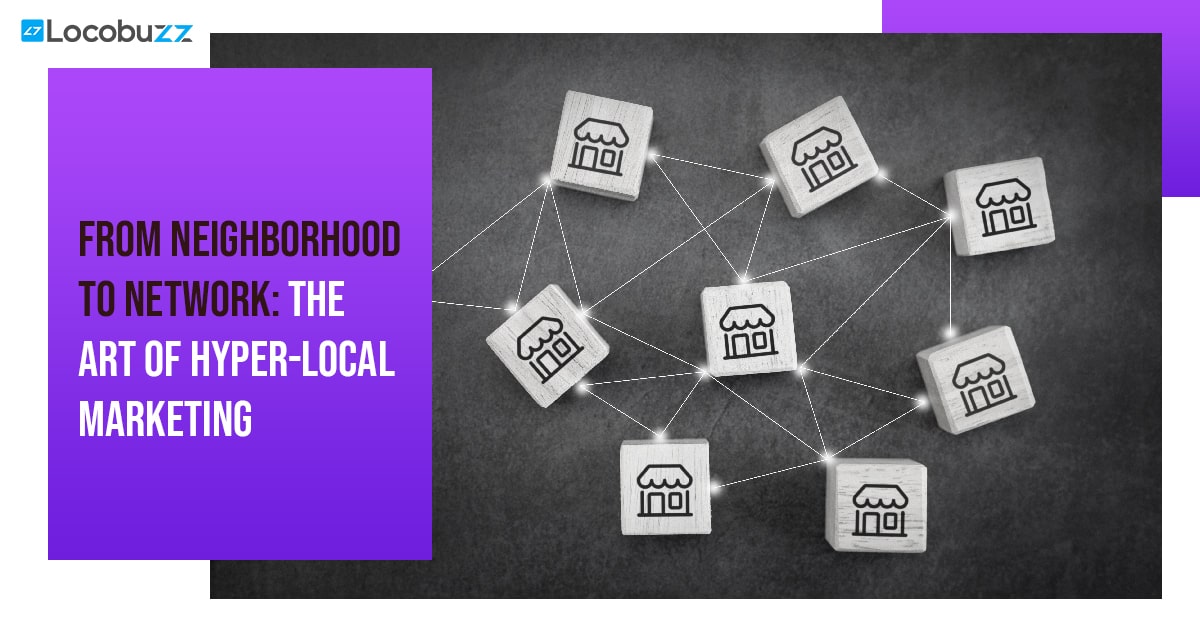Customer Satisfaction Surveys: The Key to Understanding and Meeting Customer Needs
 Customer satisfaction is a critical aspect of any successful business. It helps companies understand their customers’ needs, preferences, and expectations, leading to improved customer retention, loyalty, and advocacy. However, businesses cannot assume they know what their customers want; they need to ask them. One of the best ways to do that is through customer satisfaction surveys.
Customer satisfaction is a critical aspect of any successful business. It helps companies understand their customers’ needs, preferences, and expectations, leading to improved customer retention, loyalty, and advocacy. However, businesses cannot assume they know what their customers want; they need to ask them. One of the best ways to do that is through customer satisfaction surveys.
Table of Contents
What are Customer Satisfaction Surveys?
Customer satisfaction surveys are an essential tool for any business looking to improve its customer experience. These surveys help businesses gauge the satisfaction levels of their customers and identify areas for improvement in their products or services. Customer satisfaction surveys can take different forms, including online surveys, phone surveys, email surveys, and in-person surveys.
Conducting regular customer satisfaction surveys is crucial for businesses that want to stay competitive and build long-lasting relationships with their customers. By conducting these surveys, businesses can identify gaps in their offerings and prioritize areas for improvement. Furthermore, customer satisfaction surveys help businesses understand their customers’ needs, expectations, and preferences, enabling them to tailor their offerings to meet those needs and exceed customer expectations.
Why Must Customer Satisfaction Surveys be Conducted?
Customer satisfaction surveys are essential because they provide businesses with valuable insights into their customers’ experiences. By gathering feedback, companies can gain a better understanding of their customers’ needs, preferences, and expectations. This information can be used to make strategic business decisions that improve customer satisfaction, retention, and loyalty.
Customer satisfaction surveys are also important for businesses looking to improve customer retention and loyalty. By identifying and addressing issues that cause customer dissatisfaction, businesses can reduce churn rates and improve customer retention. Satisfied customers are more likely to become brand advocates and recommend your products or services to others, thereby increasing your customer base and revenue.
How to Measure Customer Satisfaction?
Implementing and Analyzing Customer Satisfaction Surveys
Choosing the right timing and frequency
Choosing the right timing and frequency for conducting customer satisfaction surveys is crucial for obtaining accurate and reliable feedback. The timing of the survey can impact the customer’s perception of the business, and the frequency of the survey can affect the response rate.
It is important to consider the timing of the survey carefully. Conducting the survey immediately after the interaction with the customer may not give the customer enough time to fully process their experience. On the other hand, conducting the survey too long after the interaction may result in customers forgetting important details of their experience.
The frequency of the survey also matters. If conducted too often, customers may feel annoyed and overwhelmed by the number of surveys, resulting in a lower response rate. Conversely, conducting surveys too infrequently may not provide enough data to monitor trends and identify issues.
Collecting and analyzing survey data:
Collecting and analyzing survey data is an essential step in the process of measuring customer satisfaction. When designing the survey, it is important to ask clear, concise, and relevant questions to obtain meaningful data.
Data analysis is also a critical component of the process. One should consider analyzing the data by different variables such as demographics, purchase history, and customer journey. This will allow for a more comprehensive understanding of the data and help identify trends and patterns.
Identifying key insights and trends
Taking action on customer feedback
Tracking progress over time:
Tracking progress over time is critical in understanding how customer satisfaction levels change over time. Tracking progress can help identify if the changes implemented by the business are having the desired effect.
Tracking progress can also help identify if changes in the market or external factors are impacting customer satisfaction levels. Businesses should set specific benchmarks and goals to track progress and compare the results with previous surveys.
Benefits of Customer Satisfaction Surveys
Understanding customer needs and preferences
Identifying areas for improvement
Measuring customer satisfaction and loyalty
Creating brand ambassadors
Improving customer retention
Customer satisfaction surveys can help improve customer retention. By identifying dissatisfied customers and addressing their concerns, businesses can reduce churn and retain customers. Retaining customers is important for long-term success, as it is typically more expensive to acquire new customers than to retain existing ones. Additionally, repeat customers tend to spend more and are more likely to refer others to the business.
Types of Customer Satisfaction Surveys
Net Promoter Score (NPS)
Net Promoter Score (NPS) is a metric used to measure customer loyalty and satisfaction. It is determined by asking customers how likely they are to recommend a product or service to others on a scale of 0-10. The scores are then categorized into three groups: Detractors (0-6), Passives (7-8), and Promoters (9-10). The NPS is calculated by subtracting the percentage of detractors from the percentage of promoters.
NPS is commonly used in various industries to gauge customer loyalty and to identify areas for improvement. Companies can use NPS to assess customer satisfaction and loyalty, understand customer needs and preferences, and identify brand promoters who can help spread positive word of mouth.
Customer Effort Score (CES)
Customer Effort Score (CES) is a metric that measures the ease of doing business with a company. It is determined by asking customers to rate the amount of effort required to resolve an issue or complete a transaction on a scale of 1-7, where 1 represents very low effort and 7 represents very high effort.
CES is commonly used in customer service and support to evaluate the customer experience and identify areas for improvement. Companies can use CES to reduce customer effort, improve the overall customer experience, and increase customer satisfaction and loyalty.
Customer Satisfaction Score (CSAT)
Customer Satisfaction Score (CSAT) is a metric used to measure customer satisfaction with a product or service. It is determined by asking customers to rate their satisfaction with a product or service on a scale of 1-5 or 1-10.
CSAT is commonly used in customer service and support to evaluate the customer experience and identify areas for improvement. Companies can use CSAT to measure customer satisfaction, identify trends, and implement strategies to improve customer retention.
Customer Loyalty Index (CLI)
Customer Loyalty Index (CLI) is a metric used to measure customer loyalty and retention. It is determined by analyzing customer behavior, such as repeat purchases and referrals.
CLI is commonly used in industries such as retail, hospitality, and financial services to evaluate the effectiveness of customer loyalty programs and to identify areas for improvement. Companies can use CLI to measure customer loyalty, identify loyal customers, and implement strategies to improve customer retention.
Effective Strategies for Customer Satisfaction Surveys
To implement effective customer satisfaction surveys, businesses need to choose the right surveys, avoid bias and leading questions, keep the survey short and simple, and provide incentives and rewards.
Locobuzz’s Unified Platform Can Help Businesses Streamline Their CX Strategy
Locobuzz’s unified platform provides businesses with advanced tools and features to streamline their CX strategy, including customer satisfaction surveys. With Locobuzz, businesses can gather feedback, identify key insights, and take action to improve customer satisfaction, retention, and loyalty.
Choosing the right surveys matters
Choosing the right type of survey is crucial in ensuring that you collect the right data to answer your research questions. You need to determine which type of survey is most appropriate for your research objectives and target audience.
There are various types of surveys, including online surveys, telephone surveys, and in-person surveys. Choosing the right type of survey will depend on factors such as your budget, the complexity of your research questions, and your target audience’s demographic profile.
Avoiding bias and leading questions
It’s important to avoid biased and leading questions when designing your survey questions. Biased questions can influence respondents’ answers and may not provide an accurate picture of their actual opinions.
Leading questions can guide respondents towards a specific answer, which may not reflect their actual thoughts or feelings. To avoid bias and leading questions, use clear and neutral language in your questions and avoid using loaded terms or emotional language.
Keeping the survey short and simple
Providing incentives and rewards
Best Practices for Customer Satisfaction Surveys
Customer satisfaction surveys are an important tool for businesses to gather valuable feedback from their customers. However, to make the most out of these surveys, it is essential to follow some best practices that can help ensure their effectiveness. Here are some best practices for customer satisfaction surveys:
Define clear objectives: Before conducting any survey, it is important to define the objectives and what you want to achieve from the survey. This will help in framing the right questions and ensuring that the survey is focused on the areas that require improvement.
Keep it simple and short: One of the main reasons customers do not complete surveys is the length and complexity of the questions. Therefore, it is important to keep the survey simple and short. The survey should not take more than 5 minutes to complete.
Choose the right timing: The timing of the survey is crucial. Sending the survey immediately after the customer has interacted with the business can lead to inaccurate responses due to the customer’s emotional state. It is better to wait for a few days before sending the survey.
Use a mix of question types: Using a mix of question types such as multiple choice, open-ended, and rating scales can help in gathering different types of feedback and insights from customers.
Test the survey before sending it out: Testing the survey with a small group of customers can help identify any issues with the survey before it is sent to a larger audience. This can help in avoiding errors and ensuring that the survey is effective in gathering the required feedback.
Ensure confidentiality: It is important to ensure that the survey is confidential and the responses are anonymous. This can help in ensuring that customers provide honest feedback without any fear of retribution.
Follow up with customers: Following up with customers after the survey can help in demonstrating that their feedback is valued and can also provide an opportunity to address any concerns or issues that they may have raised in the survey.
By following these best practices, businesses can ensure that their customer satisfaction surveys are effective in gathering valuable feedback that can be used to improve the overall customer experience.
The Future of Customer Satisfaction Surveys
As businesses continue to prioritize the customer experience, customer satisfaction surveys will play an increasingly important role in understanding and improving customer satisfaction. Here are some trends that we can expect to shape the future of customer satisfaction surveys:
Omnichannel Feedback Collection: With customers interacting with businesses through a variety of channels, such as social media, chatbots, and email, it’s becoming increasingly important to gather feedback from all touchpoints. Companies are leveraging technology to collect and analyze feedback from multiple channels to gain a holistic view of the customer experience.
Real-Time Feedback: In the age of instant gratification, customers expect prompt responses and quick resolutions to their issues. Real-time feedback mechanisms such as in-app surveys or chatbot interactions are becoming more popular as they provide immediate feedback to businesses and allow for quick issue resolution.
Personalized Surveys: Generic surveys that are sent to all customers are becoming less effective. Personalized surveys that take into account customer preferences, behavior, and past interactions with the business can lead to more relevant and actionable feedback.
Artificial Intelligence: AI-powered surveys can help streamline the feedback collection process by automating the creation, delivery, and analysis of surveys. Machine learning algorithms can help identify patterns in feedback and provide businesses with insights that can be used to improve the customer experience.
Focus on Employee Feedback: Happy employees are more likely to provide great customer service, which leads to increased customer satisfaction. Future customer satisfaction surveys may focus more on employee feedback to identify areas where employees may need additional support or training to provide better customer service.
The future of customer satisfaction surveys is bright, with technology playing a key role in helping businesses understand and improve the customer experience. As businesses continue to prioritize the customer experience, we can expect to see even more innovations in the way that customer satisfaction surveys are conducted and analyzed.
The Role of Artificial Intelligence in Customer Satisfaction Surveys
Artificial Intelligence (AI) has revolutionized the way businesses conduct customer satisfaction surveys. AI-powered survey tools offer more advanced and efficient data collection methods, which can lead to more accurate and actionable insights. Here are some of the ways AI is playing a role in customer satisfaction surveys:
Personalization: AI-powered survey tools can personalize the survey experience for each customer by analyzing their previous interactions with the business. This can lead to more targeted questions and a better overall experience for the customer.
Sentiment Analysis: AI can analyze the sentiment of customer feedback to determine whether it is positive or negative. This can help businesses quickly identify issues and address them before they become bigger problems.
Predictive Analytics: AI can analyze survey data to identify patterns and trends, which can be used to predict future customer behavior. This can help businesses make more informed decisions about how to improve their products or services.
Automation: AI-powered survey tools can automate the process of sending out surveys and collecting data, freeing up time for employees to focus on other tasks. This can lead to faster response times and more efficient use of resources.
Natural Language Processing (NLP): AI-powered survey tools can use NLP to understand open-ended responses from customers. This can help businesses gain a deeper understanding of customer feedback and identify areas for improvement.
AI is playing an increasingly important role in customer satisfaction surveys. By leveraging the power of AI like Locobuzz CX Suite Unveils AI Suggest which leverages the power of AI by Azur Open AI for responding using the companies knowledge base, businesses can collect more accurate data, gain deeper insights into customer behavior, and make more informed decisions about how to improve the customer experience.
Locobuzz the best for Customer Satisfaction Survey
Locobuzz is a unified platform that provides businesses with tools to streamline their CX strategy and improve customer satisfaction. Its advanced AI technology allows businesses to gather feedback and insights in real-time, analyze data, and take action on customer feedback quickly and effectively.
Locobuzz offers a wide range of features to help businesses improve their customer satisfaction, including social listening, sentiment analysis, automated workflows, and customized reports. Its AI-powered chatbots provide personalized experiences to customers, resolving their queries in real-time.
One of the unique features of Locobuzz is its Voice of Customer (VoC) solution, which helps businesses gather feedback from their customers through various channels, such as email, SMS, chat, and social media. This solution allows businesses to identify areas for improvement and take action on customer feedback quickly.
Locobuzz’s platform is user-friendly and offers a customizable interface, allowing businesses to tailor their CX strategy to their specific needs. It also provides businesses with access to expert support and a dedicated account manager to ensure a seamless experience.
Overall, Locobuzz’s unified platform and advanced AI technology make it an excellent choice for businesses looking to improve their customer satisfaction and streamline their CX strategy.
Final Thoughts
In conclusion, customer satisfaction surveys are essential for any successful business. By gathering feedback and taking action on customer feedback, companies can improve their customer experience, increase customer satisfaction, and ultimately grow their business. If you’re looking to improve your CX strategy, consider implementing customer satisfaction surveys with Locobuzz’s unified platform. Schedule a demo now!

















